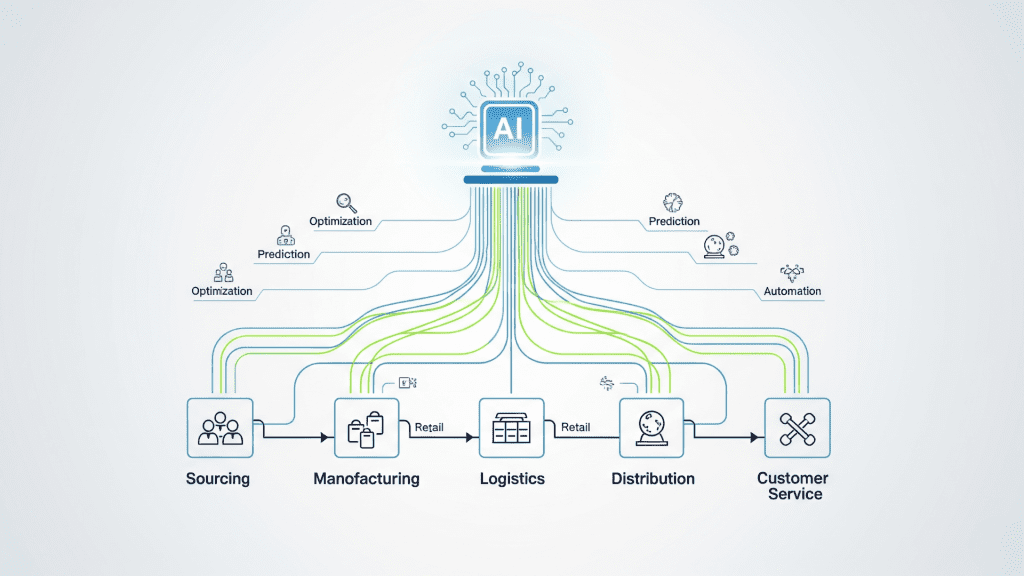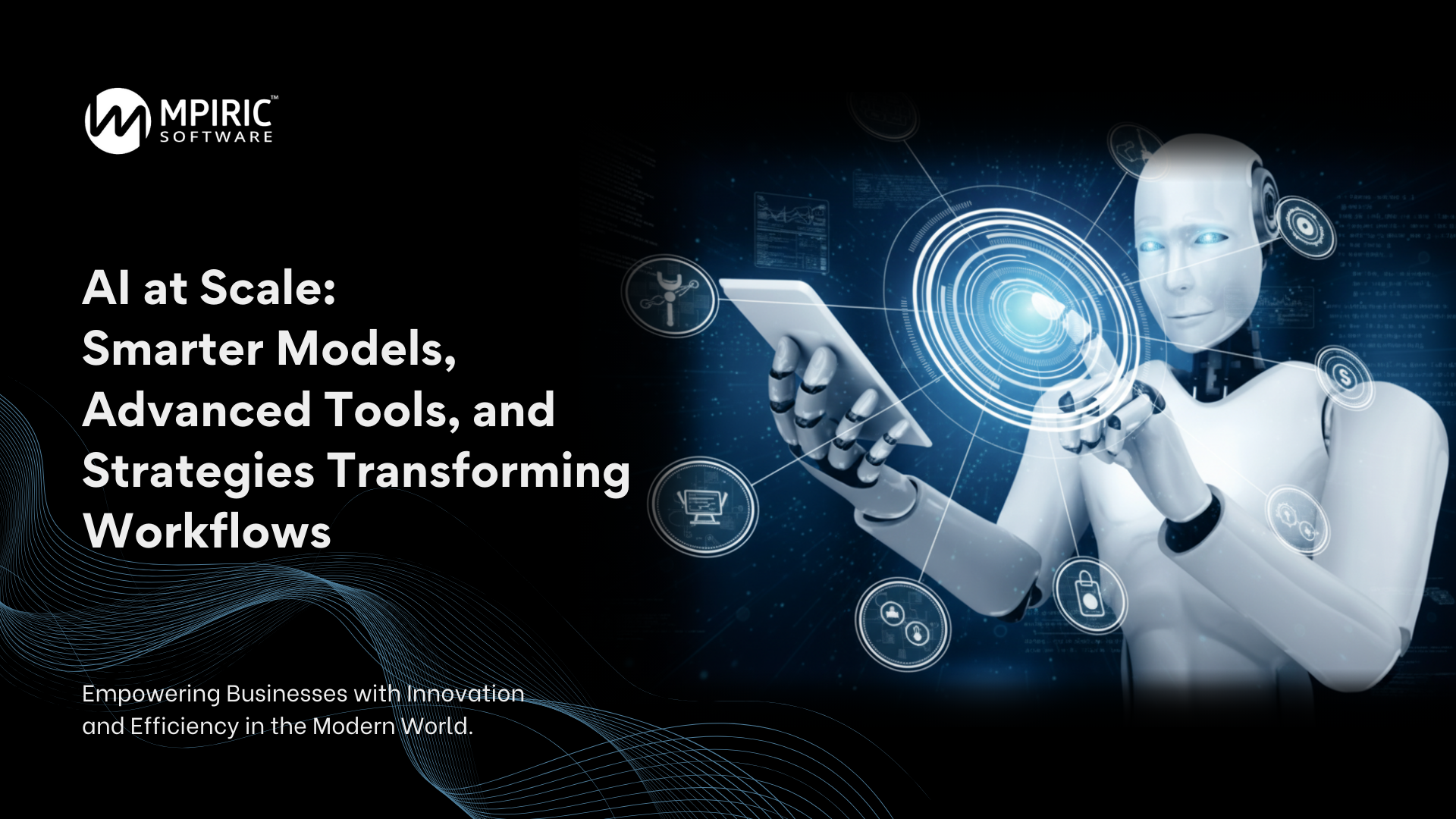For years, artificial intelligence has looked like a promising field, but most of the time it has only been used in small pilot projects and specific situations. Today marks the start of a new era: AI at Scale. This big change isn’t just about doing separate experiments; it’s about fully integrating smart systems into every part of a business’s workflow. AI is not just a tool in this model; it is what makes businesses work. This change is happening because of a mix of better, more efficient models, a complicated ecosystem of advanced tools, and clear plans for how to use them. This article will talk about the most important parts of scaling AI development and how this powerful trend is changing what it means to be efficient, creative, and have a competitive edge in today’s business world.
The Basic Parts of Modern AI at Scale
Making AI work on a large scale is hard and requires more than just training bigger models. It needs a strong foundation of the newest technology and a mature view of the entire machine learning lifecycle. This new way of making AI is based on two main ideas.
Models that are more intelligent and useful
The story isn’t just about how big a model is anymore; it’s also about how well it works and how adaptable it is. The most advanced AI research is moving away from large language models (LLMs), which are very powerful.
- Models that are made for a certain job: Training smaller models that are very well optimised and good at certain tasks. They are quicker, less expensive to run, and simpler to add to certain workflows.
- Efficient Architectures: Using methods like Mixture-of-Experts (MoE), which only activate certain parts of a model based on the task, greatly lowers the cost of computation.
- Transfer Learning and Fine-Tuning: Taking models that have already been trained and making small changes to them with your own data. This way, businesses can get the best results without spending a lot of money to train a huge model from the ground up.
Tools for the AI Lifecycle (MLOps) that are more advanced
MLOps, or Machine Learning Operations, is the field that deals with the tools and processes needed to make AI development bigger. This includes:
- Data Management Platforms: Tools for collecting, labelling, and keeping track of the huge amounts of data needed for training.
- Model Development and Training: Collaborative platforms that let users use powerful computers and make it easier to try new things.
- Automated Deployment and Monitoring: CI/CD (Continuous Integration/Continuous Deployment) pipelines made just for machine learning that automate the process of putting models into production and keeping an eye on their performance for drift or degradation.
Important Ways to Use AI to Change How Work Gets Done
Businesses can use the right tools and models to make their core operations smarter.
This is where AI Development at scale really shines.
Hyper-automation and Intelligent Process Automation (IPA) This plan goes beyond regular robotic process automation (RPA) by using AI to do complicated, one-of-a-kind jobs.
- Use Cases: AI can help with supply chain management by looking at data on traffic, weather, and demand to make logistics better in real time. In the finance world, intelligent document processing can quickly pull out and check information from thousands of invoices or contracts. The main goal of Enterprise AI Development is to get to this level of automation.
Making choices based on a lot of data
Scaled AI can find patterns and make predictions that people can’t by looking through terabytes of real-time data.
- Use Cases: E-commerce sites can use dynamic pricing that changes right away based on what customers are doing and what competitors are doing. Manufacturers can use sensor data to figure out when a piece of equipment will break down before it does. At Mpiric Software, we use these methods to make powerful predictive analytics engines for our clients that turn their data into a useful business asset.

Getting over the problems that come with scaling up AI development
There are some issues that arise on the path to AI at scale. Companies often have trouble with data governance, the high cost of cloud infrastructure, and the fact that there aren’t enough specialised AI workers. A good AI development plan must directly address these issues. This is when strategic partnerships really come in handy. Companies like Mpiric Software, which have been around for a while, know how to deal with these kinds of problems because they have a structured approach and skilled workers. The best way to get the knowledge and tools you need without spending a lot of money up front is often to hire professional AI services. This makes the trip to bigger implementation less dangerous.
Frequently Asked Questions (FAQ)
1. What is MLOps, and why is it important for AI development to grow?
MLOps is the use of DevOps ideas in the machine learning process. It’s very important for scaling because it makes building, deploying, and managing models automatic and consistent, which makes them more reliable and efficient.
2. What’s the difference between scaling AI and just using a bigger model?
“Scaling up” means using a bigger model. “Scaling out” or “AI at Scale” means using a lot of different AI models (of any size) in many different business processes and managing the whole lifecycle with strong tools.
3. As we grow AI, how can we make sure it is used in a moral way?
We need to create a strong framework for AI governance in order to do this. It means making sure that data stays private, regularly checking models for bias, being clear about how AI makes decisions, and setting clear moral standards for all AI development projects.
4. What should our business do first to grow its AI projects?
Find one important business process that AI can really help with to get started. Make a clear plan for that use case and run a successful pilot project. This gives you a plan and helps you get started on growing.

Conclusion: The future of work is smartly planned.
AI at Scale is all about starting over with business processes and putting intelligence at the centre of them. It shows that AI is going from being a tool for specific tasks to a tool for all tasks. You need a strong MLOps toolchain, smarter and more efficient models, and a clear strategic vision to do well in this new age. The people who work at Mpiric Software want to help businesses make this big change. By investing in strategic AI development and working with the right AI services provider, businesses can reach levels of efficiency, innovation, and a long-term competitive edge that have never been seen before.


